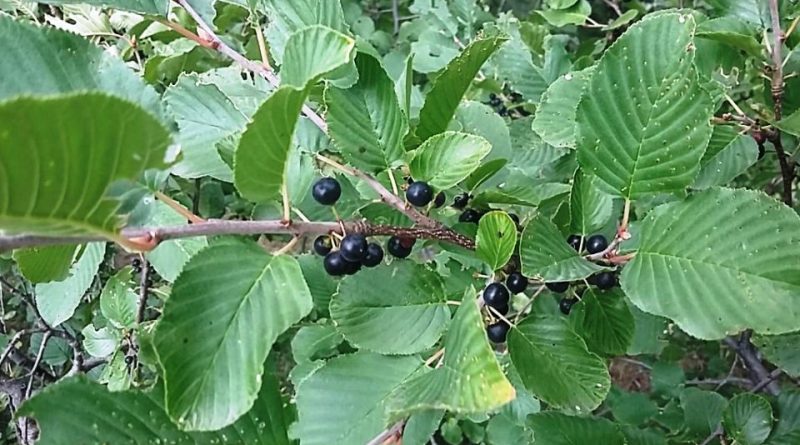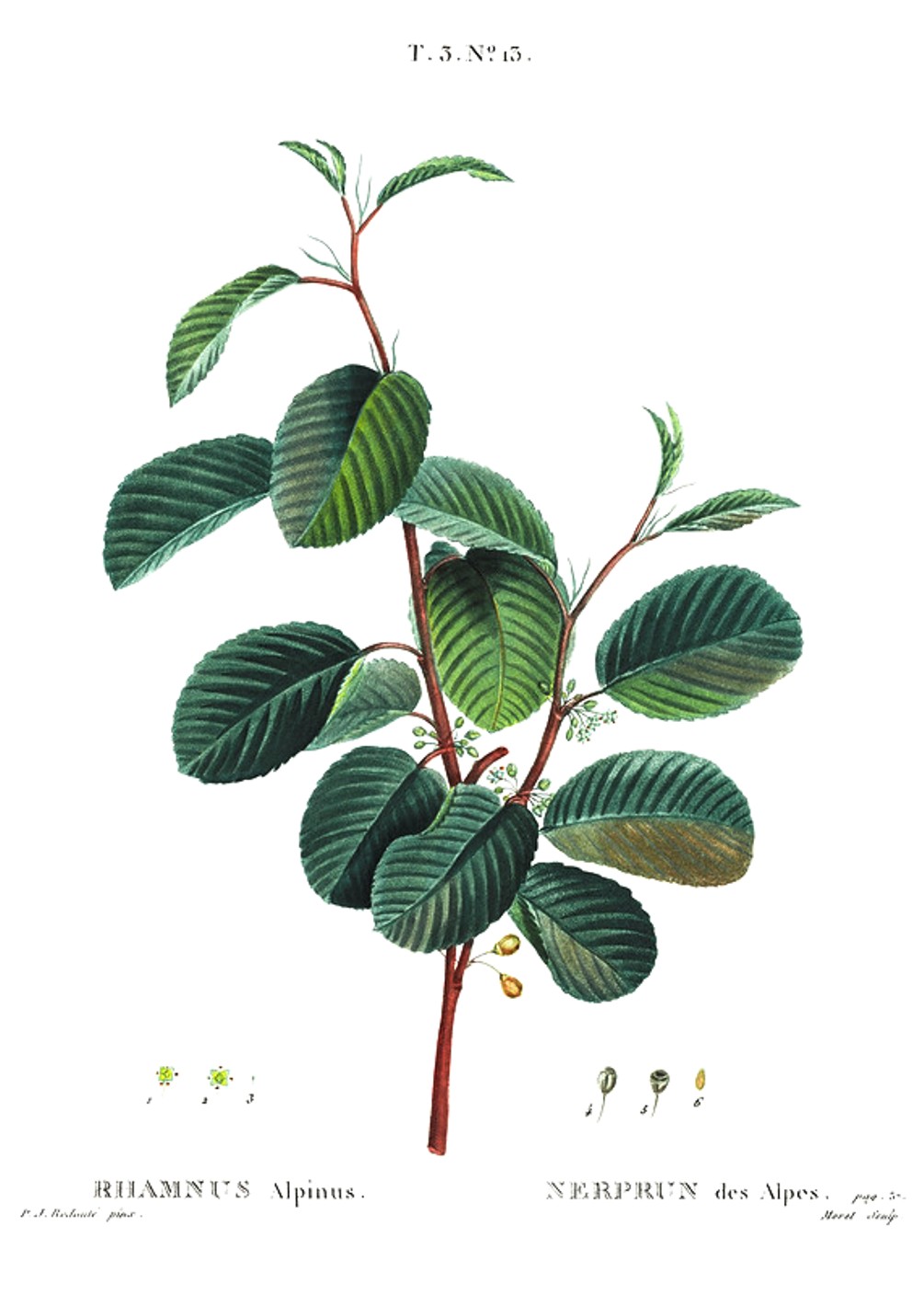Atadinus alpinus
Atadinus alpinus
The alpine ramno (Atadinus alpinus (L.) Raf.) is a shrub species belonging to the Rhamnaceae family.
Systematics –
From a systematic point of view it belongs to:
Eukaryota Domain,
Kingdom Plantae,
Subarign Tracheobionta,
Spermatophyta superdivision,
Magnoliophyta Division,
Magnoliopsida class,
Subclass Rosidae,
Order Rhamnales,
Rhamnaceae family,
Rhamneae tribe,
Genus Atadinus,
A. alpinus species.
The terms are synonymous:
– Alaternus alpinus (L.) Moench .;
– Frangula latifolia Mill .;
– Oreoherzogia alpina (L.) W. Vent;
– Oreoherzogia fallax (Boiss.) W. Vent;
– Rhamnus alpina L .;
– Rhamnus alpinus L .;
– Rhamnus glaucophylla Sommier.
Etymology –
The term Atadinus derives from the genus created by Rafinesque in 1838, probably giving it a fantasy name as was his custom.
The specific epithet alpinus comes from Alpes, the mountain range of the Alps, alpine in a broad sense, from high mountain environments on any continent.
Geographic Distribution and Habitat –
The alpine ramno is a plant of the Mediterranean region, present from Spain to Greece, Turkey, up to Morocco and Algeria.
It is also present in peninsular Italy at an altitude between 600 and 1800 m. s.l.m ..
Its habitat is that of rocky ledges and deep cracks on rocky ground, clearings in pine and beech woods, ravines, gravel embankments along rivers, which occupy more shady positions in the mountains south of its range.
Description –
Atadinus alpinus is a deciduous plant with a shrub growth up to 150 cm tall.
The leaves are leathery, with a basically elliptical shape (sometimes almost roundish), with a finely and almost imperceptibly toothed margin. They are glossy and deep green on the upper page, opaque and lighter on the lower page. The flap is also characterized by a typical double series of evident parallel secondary ribs, hollowed in the upper page and in relief on the opposite side.
The flowers are small, yellowish-greenish in color, singularly inconspicuous, and collected in bundles at the apex of the branches on the buds of the year and appear in the months of May and June.
The fruit is a subspherical drupe (nuculanium), 5-7 x 5-8 mm, fleshy, glabrous, shiny, green then red and finally black when ripe. The seeds are 2-3, brown, shiny, dorsally furrowed by 4.5-5.2 x 2-3 mm.
Cultivation –
Atadinus alpinus is a plant that grows mainly in rock habitats. It is a pioneer plant that manages to live in the crevices of rocks, overcoming, apparently without many problems, the hot and dry summers of the Mediterranean climate.
The plant is harvested in nature for local use as a medicine.
For its cultivation it must be taken into account that it is a moderately cold-resistant plant, able to tolerate temperatures down to about -20 ° C when it is completely dormant and usually found in calcareous soils.
Propagation occurs by seed. The sowing must be done immediately after the removal of the seed in autumn in an unheated seedbed. The stored seed will require 1-2 months of stratification at 5 ° C and should be sown as soon as possible during the year in a cold bed.
The transplant should be carried out in late spring or early summer of the following year after having raised the plants in pots for the first year.
It can also be propagated by cuttings, taking parts of semi-mature wood in the summer period or by cuttings of mature wood of the current year’s growth to be rooted in autumn in a protected area.
Customs and Traditions –
Atadinus alpinus is a plant that has been used for medicinal purposes.
The fruits and bark of this plant are purgative.
However, remember that in small doses and for short periods they can be safe and effective, but used for long periods they can weaken the body’s natural ability to defecate and can have a number of long-lasting negative effects on the body, including anemia. , poor absorption, hematuria and weight loss. Large single doses can cause severe diarrhea.
From the leaves an aqueous extract is obtained which has shown anti-inflammatory activity and an effect in the treatment of periodontitis.
All parts of the plant have been reported to contain high concentrations of anthraquinones, anthraglucosides and cyclitols.
Even if there is not enough information on this plant, please note that all plants of this genus contain a mixture of compounds (mainly rhamnetin, quercetin and rhamnazine) which make up a range of good quality dyes. The color and its intensity depend on which part of the plant is used as a coloring material (leaves, fruits and bark are most commonly used), in what period of growth it is harvested and in what state it is used. With the use of the corresponding mordants (alum, copper and iron vitriol, tin dioxide, chromium, etc.) it is possible to obtain practically the entire color spectrum from lemon yellow to purple and dark cinnamon brown, from olive green to deep blue and to purple.
However, the coloring extracts obtained from the bark, leaves and fruits are suitable for dyeing cottons, silks, wool, leather, paper and wood. These dyes are often exceptional for their fastness.
Furthermore, although there is no specific information for this species, the seeds of these plants are generally rich in fatty oil and many of them are extracted to be used as lubricating oils, etc.
Preparation Method –
The fruits and bark of Atadinus alpinus have shown a purgative effect.
An aqueous extract is obtained from the leaves and is used for its anti-inflammatory properties.
Guido Bissanti
Sources
– Acta Plantarum – Flora of the Italian Regions.
– Wikipedia, the free encyclopedia.
– Useful Tropical Plants Database.
– Conti F., Abbate G., Alessandrini A., Blasi C. (ed.), 2005. An annotated checklist of the Italian vascular flora, Palombi Editore.
– Pignatti S., 1982. Flora of Italy, Edagricole, Bologna.
– Treben M., 2000. Health from the Lord’s Pharmacy, Advice and experiences with medicinal herbs, Ennsthaler Editore.
Warning: Pharmaceutical applications and alimurgical uses are indicated for informational purposes only, they do not represent in any way a medical prescription; therefore no responsibility is taken for their use for curative, aesthetic or food purposes.


